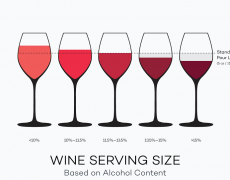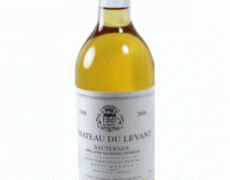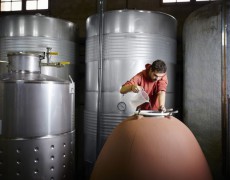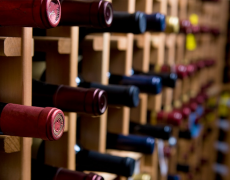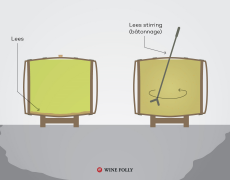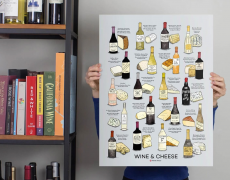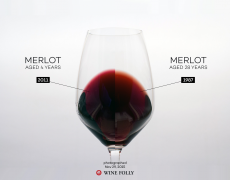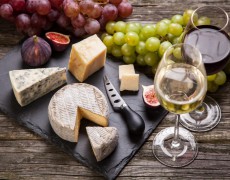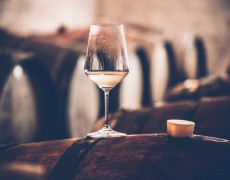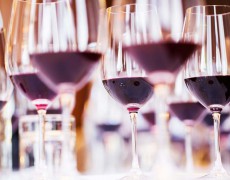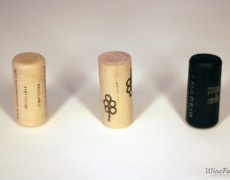Shooting Darts in the Dark
For many of us, ordering wine in a restaurant is like shooting darts with our eyes closed. We set the bar quite low for ourselves when it comes to defining success, and often we’re content just to hit the board. We may aim for a delicious wine (and strive not to embarrass ourselves in the process), but how can we expect to consistently nail our target when we’re shooting blind? Well, I have good news, my friends. You don’t need to be an expert to order awesome wine and impress your dinner companions in the process. I’m going to give you the lay of the land so you know exactly how wine lists and waiters operate, then I’m going to provide you with a trusty wine ordering script. When you’re done reading this article you’re going to aim for that bullseye and know how to hit it every time.
The Markup: It’s no secret that restaurant wines have massive price markups, and in a restaurant world that’s astronomically cost-heavy, you really can’t blame them. While there’s clearly fluctuation in pricing patterns from restaurant to restaurant, on average, they sell their wine bottles at three times the wholesale price they paid (about double retail price). So that delicious bottle of Cabernet Sauvignon you bought for $25 at the local wine store will run you about $50+ at a restaurant. Depending on the price level of the wine you buy, the retail markups can run as high as 400%.
Restaurant wine prices and their markups have an inverse relationship, so the cheaper the wine the higher the price markup, and vice versa. There is one exception to this rule - the second cheapest bottle on the menu.
2nd Cheapest Bottle Ruse: Restaurant owners understand that you won’t want to come across as a big cheapo when it comes to ordering wine. And they’re spot-on, aren’t they? Most of us scan the wine prices to find a glass or bottle that’s just barely above the most inexpensive option on the list. It’s not the cheapest, and it’s not all that expensive relative to the alternatives, so what’s not to love? Those who price the wine list penalize you for this tendency by greatly marking up the second tier of cheapest bottles.
Don’t be afraid to go for the cheapest bottle on the list (not to be confused with the unpalatable ‘house’ wine, which is typically only provided by the glass). In my experience, the most inexpensive bottle is usually a lovely wine.
Glass vs. Bottle: Should you buy a bottle, or individual glasses? The typical by the glass wine volume poured at restaurants equates to 1/4 of the bottle, and is generally marked up more than a single bottle. So if you know that at least three glasses of the same wine will be imbibed, buy the bottle!
Sometimes, however, paying the additional markup for individual glasses is worth it. You’ll have more variety amongst the wines you get to experience over the course of the meal, as well as the versatility to pair the wine perfectly with each dish. Furthermore, your dinner mates might have clashing wine preferences, so you may need to go the glass route to keep everyone happy. Just remember, you’re paying a big premium.
Unique Brands & Varietals: Experiment with lesser known brand names and indigenous grape varietals. These don’t sell as well as the Robert Mondavi Cabernet Sauvignons of the world, so you can rest assured that if the restaurant owners went out of their way to include them on the wine list they must be worth their weight in terms of quality and deliciousness. Moreover, the markups for these mysterious gems are typically lower, so you’re getting a deal.
Anchoring Effect: We are all subject to a cognitive bias known as the ‘anchoring effect.’ Simply put, it posits that our initial observations stay with us, impacting our ensuing perceptions and subsequent decisions. For example, consumers have a tendency to be highly influenced by the first price they encounter when considering a purchase. The effect has been well documented in studies, including chocolates, electronics, and yes, fine wines. When you start perusing through the wine list and see that the majority of bottles are $90 or higher, you may feel inclined to stray above your price target of $50 and buy that $70 bottle. Don’t fall into this anchoring trap!
Food/Wine Pairing: We usually glance at the wine list first, but if you want to be thorough you should determine your food before ordering the wine. There’s a small list of “high risk” foods (most contain significant amounts of sugar, bitterness and/or spiciness) out there that have the potential to completely ruin your wine, and that’s the last thing we want. If you think you’re potentially ordering a “high risk” meal you should let the waiter know so an appropriate wine can be selected. Having said that, many diners can get way too caught up on food/wine pairing to the point where they deprive themselves of wines they really enjoy, so if you’re not in the “high risk” zone order what you like!
The Wine Ordering Script
Now that you know the lay of the land, how do you proceed? I suggest following these five steps every time you order wine.
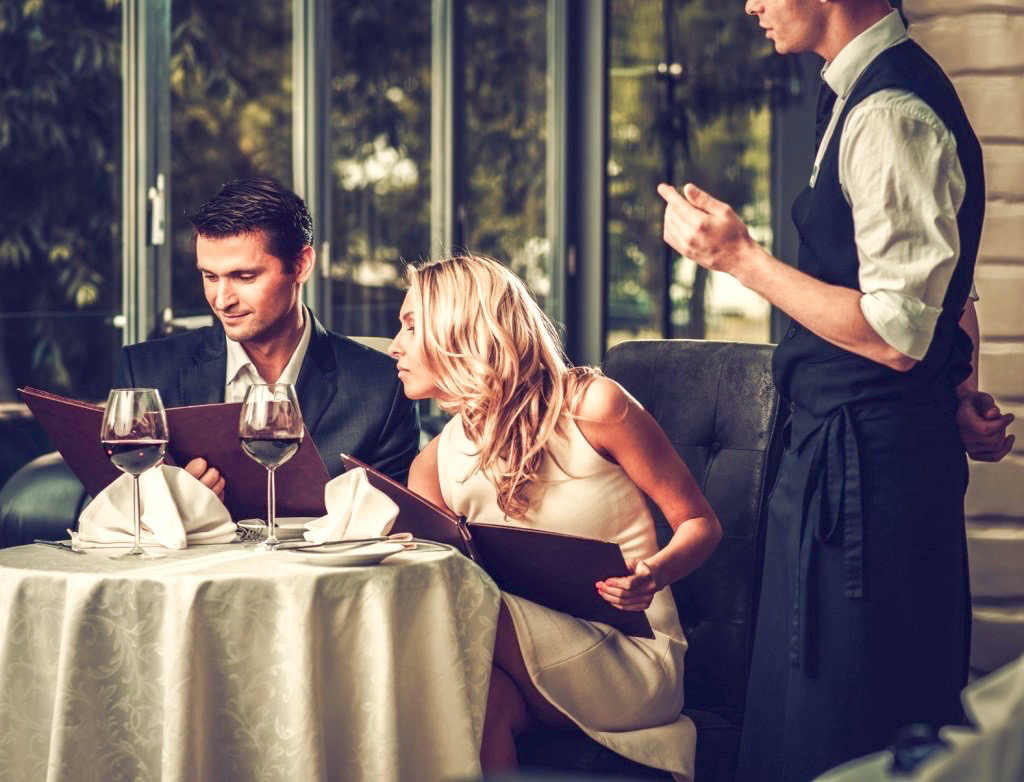
Step 1) Survey the Table
After you’ve been seated, have a brief discussion with your dinner companions to better understand these two items:
- Whether they want individual glasses vs. bottles
- Their likes and dislikes (e.g., red vs. white, ill-favored varietals, etc.)
Step 2) Set Your Price Limit
Determine what your price max is and stick to it! Don’t let the median price of the wine list coax you into straying from what you feel comfortable paying. I first fell in love with wine at a price ceiling of $50 per bottle.
Step 3) Utilize the Server / Sommelier
Unless you’re a wine expert and feel comfortable making selections on your own, it is absolutely in your best interest to utilize the server / sommelier for guidance. There is one caveat, though. You must provide the right information. Think of ordering wine in a restaurant like a trip to the doctor — you need to convey your symptoms in adequate detail to get the proper diagnosis. This can be quite intimidating in a restaurant setting, so I’ve boiled the complexities down to the essential points.
Here’s what you need to convey:
- Red or White
- Fruit-Forward, Earthy, or Somewhere In-Between
- The “body” of the wine, which refers to its mouth-feel in terms of weight and thickness. There are three options here: light-bodied (e.g., skim milk), medium-bodied (e.g., whole milk), and full-bodied (e.g., cream).
- Price point. This one can get tricky when you’re on that high stakes date or trying not to look like a cheapskate in front of a group of people. How can we communicate our price range to the server without revealing it to our companions? Simple! All you need to do is open the wine list, point directly to a price that you’re comfortable with and say, “I‘m considering a bottle like this.” There’s an unspoken understanding in the restaurant business that this translates to “This is precisely how much I’d like to pay, but I don’t want to say it aloud.” It works like a charm every time.
In summary, the conversation would go something like this. “Hi there! I’d like to order a bottle of red wine to share for the table. We generally prefer medium-bodied wines that are nice and fruit-forward. Brian hates Pinot Noir (blasphemy!), but other than that we’re totally flexible. I am considering a bottle like this (point to price), but would love to hear your suggestions based on our preferences.”
That’s it! You’re officially a wine-ordering Godfather, and your friends’ jaws are on the floor. More importantly, you’ve just given the server more than enough information to make some awesome recommendations for you and the table. Bravo!
Step 4) Sample the Wine
Now that you’ve selected a bottle, the server will begin the wine presentation ritual. First, you will be presented with the bottle to confirm that it is in fact the one you ordered. Don’t forget to check the vintage here. You’d be amazed how often servers pull wines from a year that’s entirely different from what you ordered.
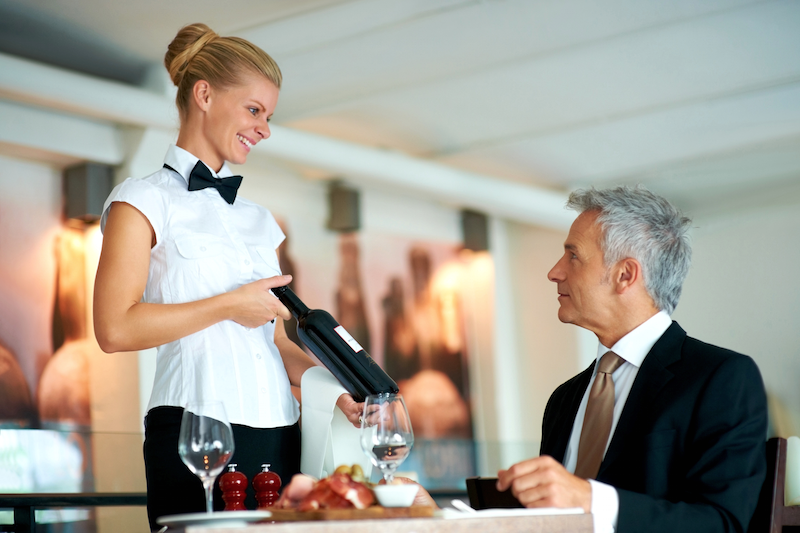
The server will then pull the cork and pour a tiny taste of the wine into your glass so you may determine whether it’s corked or defected in any way; the purpose of this is not for you to determine whether or not you like the wine! Sorry, but once that cork was popped you committed yourself to buying the bottle. Thankfully, cork taint is a rare phenomenon, only occurring in 3-5% of the world’s natural corks.
Give the glass a few swirls, a deep sniff and a taste. Typically, corked wine will give off unpleasant aromas of moldy newspaper, wet cardboard or dank basement. If something smells/tastes off, do not hesitate for one second to tell your server that you think the wine may be corked. Any establishment that’s halfway respectable will extend their apologies and then head back to pull another bottle from the cellar free of charge.
Step 5) Enjoy!
Once you’ve confirmed that the wine is sound, it’s time to sit back and revel in the fruits of your labor! Be sure to enjoy the wine at your own pace. Some waiters will hyperactively refill your wine glass because they want to kick that first bottle ASAP in hopes that you’ll buy more. And on the flipside if your waiter is slow to refill your glass then do not hesitate to reach for the bottle and do the deed yourself.
Stick to these five steps every time you order wine and it will go from what once felt like shooting darts with your eyes closed to hitting the ball out of the park and into another stratosphere. Your dinner companions will be chanting your name as you make your way around the bases.


